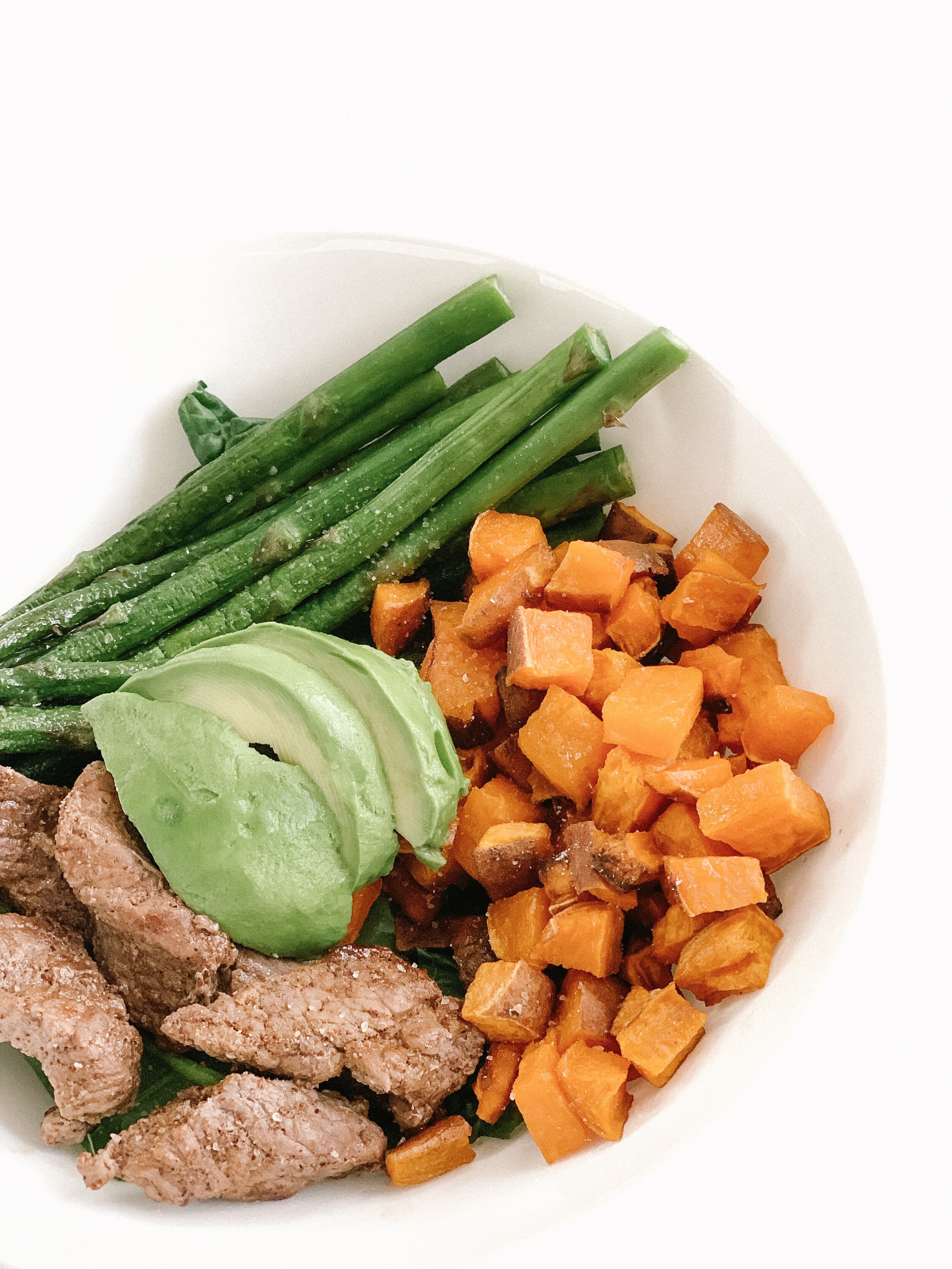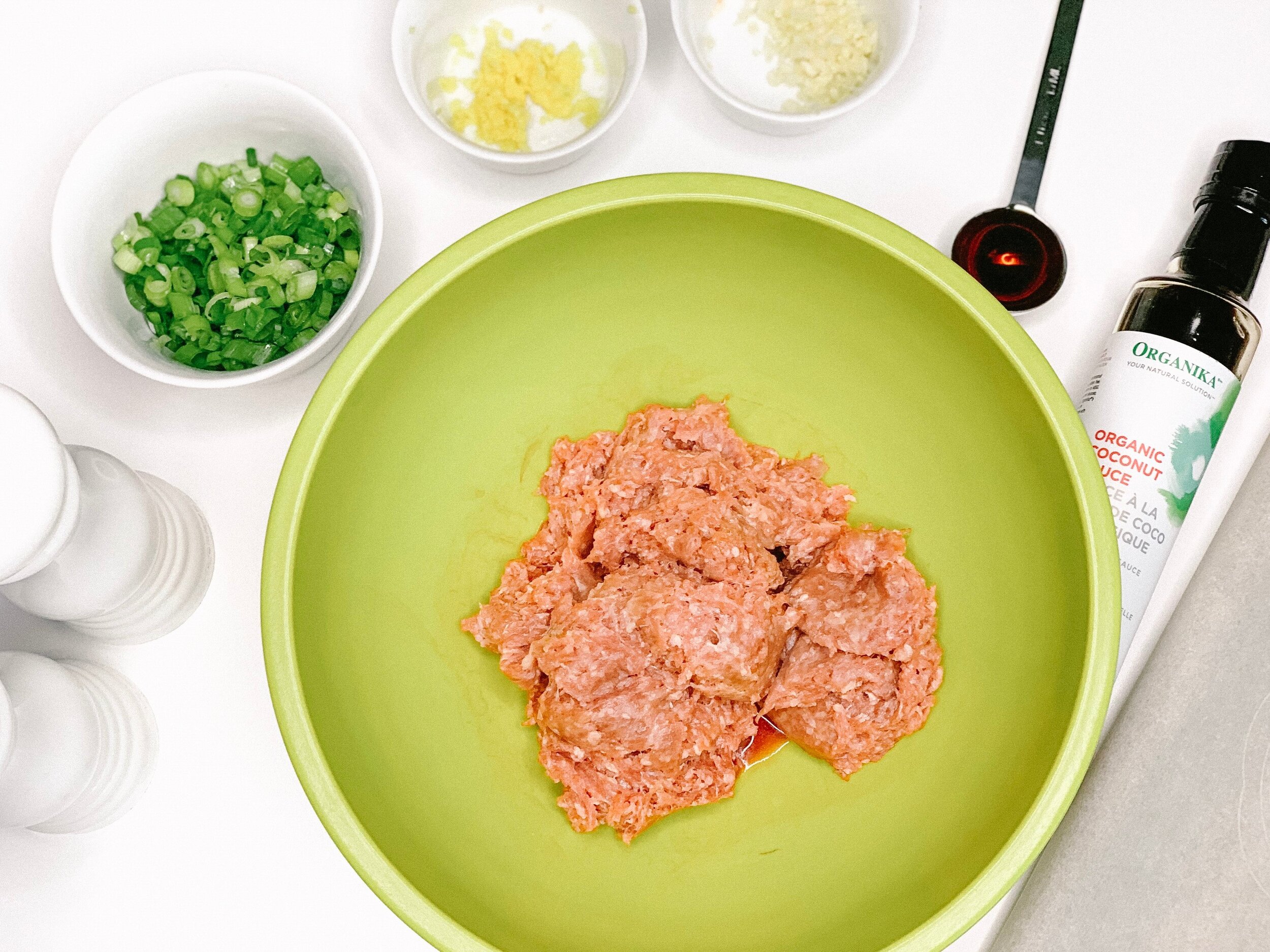A Realistic Holistic Batch Cooking Guide
Sooo since the recommendation is that we avoid grocery stores as much as possible, we have two choices:
1) Load up on frozen, canned & processed foods.
2) Finally learn to batch cook healthy foods for you and your family!
I strongly urge you to seize this opportunity and choose option #2. Not only will you be able to better able to support health of yourself and your family by providing better nutrition through this time, but you will learn how to to do this while you have nowhere else to be and can get used to what a batch cook looks like!
This will set you up with healthy habits that will serve you LONG after the social distancing ends!
SO, if you're ready to take control of your grocery bill, your planning, your time and your health... READ ON!
As my focus is supporting those with digestive & autoimmune disorders, my batch cooking guide focuses on a paleo approach for healing but you can use the tips and tricks provided to help you batch cook for any healthy diet!
WHAT IS BATCH COOKING?
Batch cooking simply refers to the practice of cooking multiple meals in “batches” and then either freezing or storing the leftovers to be reheated or used as components for quick meal assembly!
If you are short on time, can only hit the grocery store once a week, are working with dietary restrictions, or are trying to save a bit of money, batch cooking is the way to go!
HOW MUCH TIME DOES IT SAVE?
Batch cooking can save some serious time in the kitchen. Cooking meals every night can add up to 20-30 hours a week, including clean up! 🤯
With an organized batch cooking routine, you can get that down to just 4-5 hours a week… for REAL! So that old excuse of “I don’t have enough time to batch cook” ain’t working for you no more.
Now, not everyone has the planning capacity or even the need to completely batch cook ALL of their meals. I would say the key to success is splitting your time between cooking fresh meals and reheating meals that were previously batch cooked.
A good goal to start with is to aim to batch cook a few big soups/stews as well as some proteins and maybe roasting/chopping a few different kinds of veggies to be used for assembling salads or skillets on-the-go. Aiming for one 2-3 hour session once a week can really help!
When we break it down, it’s not really the actual batch-cooking itself that's so hard… its usually the planning and organization that deters people from executing it properly. Here are some tips to help you out…
PLANNING YOUR BATCH COOKING SESSION
1) SCROLL THROUGH YOUR RECIPE BOOKS & PINTEREST AND CHOOSE DISHES THAT MAKE SENSE!
You can do all the meal planning & grocery list making but if you get those ingredients home only to discover that they take forever to cook or can’t be cooked at the same time as each other… your batch cooking session isn’t going to be very efficient.
Some tips for choosing batch cookable dishes:
Choose multiple dishes that can be cooked at the same oven temperature: This will make the most of your time in the kitchen. I recommend picking out a vegetable and a meat recipe that call of the same oven temperature and get them going at the same time!
Select recipes that are one-pot: Minimizing recipes that call for a lot of cooking vessels is going to make things much easier to coordinate and quicken the cleaning process. Soups & stews are ideal for this reason, especially when the sautéing can be done in the same pot at the beginning of the recipe. If you’re looking for some ideas, check out my blog full of One-Dish AIP Meals!
Select recipes that contain complete meals: To get the most out of your time, it makes sense to choose recipes that are complete meals rather than making a bunch of sides. Start by planning a soup, stew, casserole or skillet as the core of the routine and then see which sides fit in as opposed to the other way around.
Select meat recipes that can save time later: By cooking something like a whole chicken or a pot roast, you end up with a hunk of protein that you can use to make a super quick meal later in the week. Shredded meat can always be added to a salad, stir-fry or to make a quick soup with vegetables!
Select recipes that are simple and intuitive: Especially if you are new to this, this is not the time to try out a new complex recipe - stick with basic & doable for now! Avoid recipes that have a million ingredients and paragraphs of directions… this leaves the door open for a large margin of error.
Take into account storage capabilities: Something like Bone Broth, for example, will last a week in the fridge, while fish is only going to last two days! Some recipes freeze well, others need to be eaten fresh. Take this into account when you’re building your plan and choosing your recipes.
2) MAKE SURE YOU HAVE ALL THE TOOLS YOU NEED
If you have two recipes that use your skillet, make sure to carefully plan how long it will take to finish one so that you can realistically use it again. Don’t forget about cooling and cleaning time! Remember to make sure you have all the tools you need. Does the recipe call for an immersion blender? Food processor? Pressure cooker? Any item you don’t have? Is your pot big enough to make a double batch of that chicken soup for the soul? Ask all these questions BEFORE you go shopping.
While you don’t have to have a bunch of fancy tools or an amazing kitchen to be successful at batch-cooking, there are a few minimum items you will need, like storage containers to keep food in when it is finished. Give thought to these and make sure you have them on hand before you begin. I prefer glassware because plastic containers can leach plastics containing endocrine disrupting chemicals into your food, especially when the food contains fat or is hot. I use these glass containers and loads and loads of mason jars! Pick up these items BEFORE you go grocery shopping.
3) MAKE A MEAL PLAN FOR THE WEEK
Print out a calendar page and write down which recipes you plan to eat for breakfast, lunch and dinner every day. Then determine the groceries you will need based on the recipes you have selected and write those out before you go shopping. Schedule your grocery and batch cooking sessions for when you have ample time to execute them. Take that grocery list you made with you when you go shopping and stick to it. Try to avoid grabbing other things you don’t need.
NOTE: During the Covid-19 pandemic please try to visit your local grocery store at off-peak times to avoid crowds. Sanitize your hands on the way in if you can and wipe down your grocery cart. Sanitize on the way out as well and wash you hands as soon as you get home. Wash your produce well and wipe down any countertops before and after cooking.
4) START WITH A CLEAN KITCHEN AND CLEAR ANY CLUTTER
Since you will be going through a lot of volume of food and making a lot of dishes, it is best to start fresh to avoid overwhelm later. Put away any countertop appliances that won’t be used and find a new spot for any decorative things taking up counter space. Take a breathe, get your head in the game, put on some music and prepare to cook!
5) CHOP ALL INGREDIENTS BEFORE YOU START COOKING
Most recipes won’t tell you when to chop what. They’ll just say something like “1 onion (diced)” then in the recipe they say “add onion to pot” and you’re sitting there with a hot dish and an unchopped onion. This adds time and stress to your meal prepping fun! Chopping everything before even turning on the stove will make it easier to follow recipes and reduce stress in a BIG way.
6) USE A TIMER
This is not the best time to wing it or just eyeball it, especially if you are cooking multiple dishes at once. It’s so easy to leave that one sauce boiling only to remember at the end of your batch and find it crusted to the pan.
7) CLEAN AS YOU GO
You will be surprised how much time you have while you wait for certain dishes to cook. Be prudent and use this time to take mini cleaning breaks! It will make the job so much easier at the end, and dishes are FAR easier to clean when they are freshly dirty before they start drying and cementing to the bottom of your pans.
8) PACK YOUR FRIDGE & FREEZER AND FOLLOW YOUR MEAL PLAN
You’ve finished cooking, it all smells amazing, you’ve stored them in your containers and they’re ready to go away. Take a moment to remember what needs to be frozen so that it leasts until you plan on eating it in your meal plan and what can just go in the freezer. Pack accordingly. If you think you’ll have a hard time staying on track you can even start by labelling containers by days of the week to make it easier to figure out what you’re supposed to be having when!
At the end of the day just do your best! There may be slip ups, things might get burned, something might go-off too soon but this type of batch cooking will ultimately shorten your shopping time, save you money, save you time and allow you to eat health at home every single day!
Let me know if you have any questions at all or if you think I missed anything from the list by commenting below!
If you found this helpful, please share with your friends who are having a hard time shopping & eating healthy during this time of self-isolation. Eating healthy right now is an important part of keeping ourselves mentally well through a potentially stressful and gruelling time.
Stay well & love yourself.
Kisses & kombucha,
Meg




